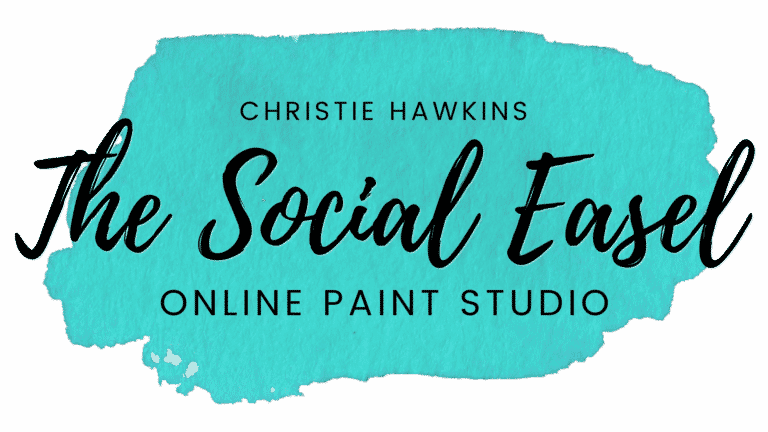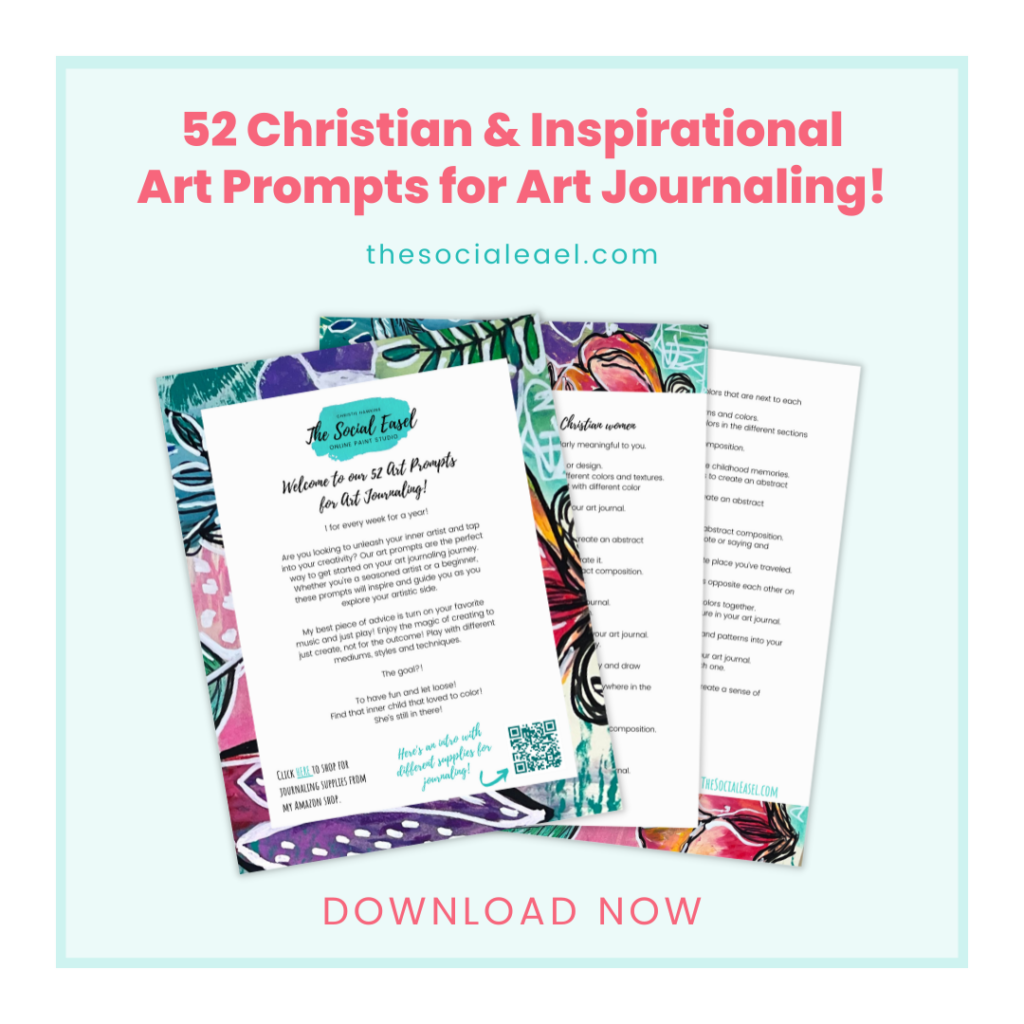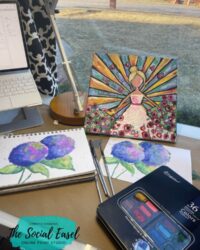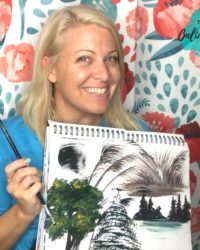Art Journaling for Beginners
Christie’s personal journey with art journaling, art journaling supplies, and the dos and don’ts of art journaling.

Art Journaling is a great tool for experimenting with techniques and mediums while also generating new ideas and inspiration for future projects without the parameters of a tutorial.
* This post may contain affiliate links. If you purchase, I could make a small commission at no charge to you. Please read my Disclaimer and Privacy Policy HERE.
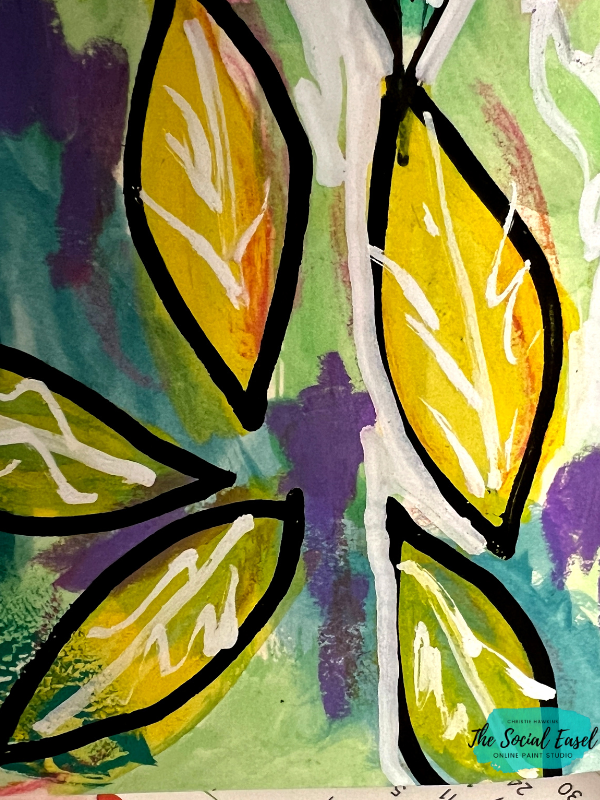
What is Art Journaling?
Art Journaling is one of my favorite things to do. It allows you the freedom to test out new ideas and techniques without the limitations of a tutorial or guide to follow.
At some point or another, we all hit roadblocks in our creativity. I’m no exception! That is when I love to utilize art journaling. All you have to do is just sit and start playing! Really! It is just a fun way to experiment with different mediums, not just paint.
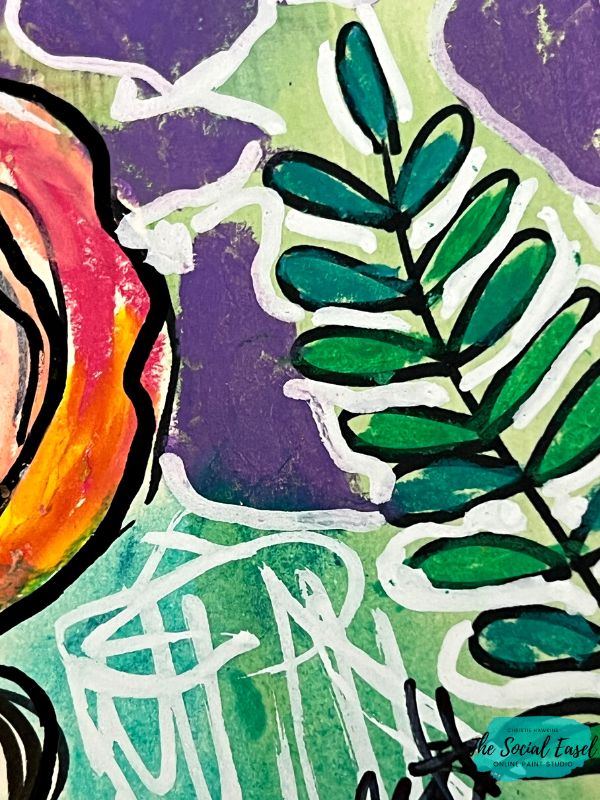
Another thing I love about art journaling is looking back through the pages of my journal. Every page is like its own piece of art and story, thus each page is its own masterpiece! Furthermore, an opportunity to explore color, shape, and abstract art. Just pick up whatever you have on hand, open your journal, and get those creative juices flowing!
Materials you will need for art journaling
Another one of the great things about art journaling is that you most likely don’t need to go out and buy any special materials! You can simply use what you already have on hand. But, here are a few things to consider gathering before you take on the fun, relaxing, and freeing activity of art journaling.
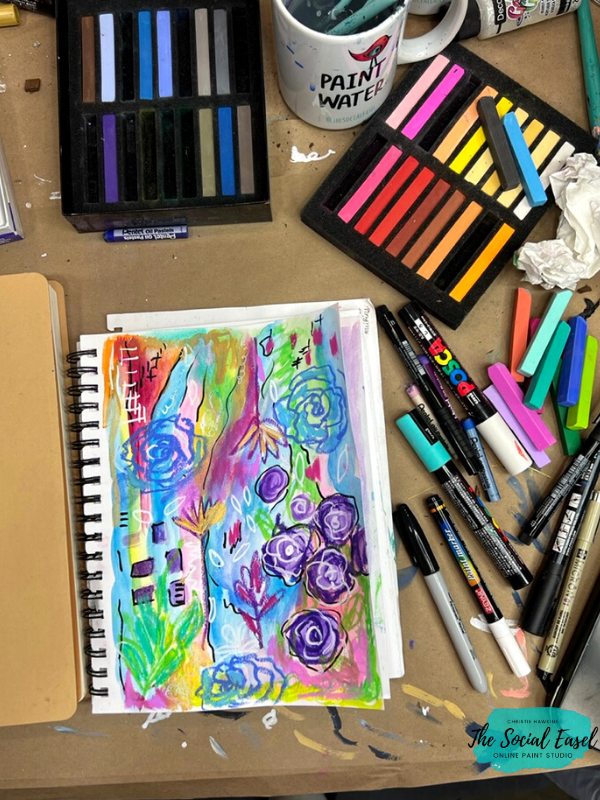
Art journaling notebooks.
Don’t feel like you have to own a specific type of notebook to begin art journaling. Any thick-paper notebook would do! If you don’t have that on hand, run to the store or pull up Amazon and grab one of the following items:
- Mix Media Pad – I grabbed a Mix Media Pad from Walmart when I found myself out-of-town and without anything to play in. In fact, it is possible to use any art pad or notebook as your art journal.
- Art Journal from Amazon –My art journal is this lovely, simple art journal from Amazon. It features 64 unlined pages and nice thick paper. You can use almost any kind of medium on it!
Of those 64 pages, you could make it a goal for yourself to do one page a week for a year, with a few pages left over for when you feel extra creative. Then you could flip back through the journal at the end of the year and see your year in review through an abstract journey.

Mediums to use when art journaling.
First and foremost, do not stress about purchasing a ton of new mediums for your art journaling project. What makes art journaling so appealing is that there is no pressure to create a specific end product using specific mediums. Use what you have on hand! But, if you need a little inspiration for what mediums to use, here are a few I love:
- Soft Pastels – Soft pastels are great for top layering because of their powdery consistency. Pens and other mediums are not favorable to going over soft pastels, so it is best to use these for a last layer.
- Oil Pastels – Oil pastels are waxier than soft pastels but are one medium you can put over soft pastels. Think of oil pastels as heavy crayons that offer bold contrast and rich and heavy lines. Oil pastels will blend together, but they will not blend quite like soft pastels. The super, heavy pigmented crayons you played with when you were little are very similar to oil pastels. You can even create some transparency with them.
- Paint Pens – I love to use my Posca paint pens for art journaling. You can use them to add character with lines. I like to use white, black, and metallics to add accents. Posca pens are great because they are waterproof, and paint markers. You could also use Sharpie pens or other brands.
- Color wheel – When you are art journaling it is a great time to pull out your color wheel and play with colors – opposites, unique combinations, or colors you wouldn’t normally put together.
- Spray fixative – I like to use spray fixative while art journaling to seal my pastels and pencils. Because it prevents smudging and allows you to easily go over the top of your mediums. You can even put paint over mediums after using the spray fixative! In conclusion, it really gives you a ton of options for layering within your art journal.
- Watercolors – When I am art journaling, I like to pull in my watercolors and play with transparency. The more water you add the more transparent the color becomes, and the less water you add the darker your watercolor.
By all means, play around! That’s what art journaling is all about!
Set the mood.
Now that you have gathered all your materials, it’s time to set the mood! Remember, art journaling is all about freedom, creativity, relaxation, and play.

- Consider turning on your favorite, calming music and removing all distractions.
- Do not limit yourself to time constraints. Art journaling can take as long or as short of time as you need.
- This art project will be staying in your journal, so there is no need to worry about it being on display for judgment from others. This is about you playing and fueling your creativity.
- You can use art journaling to get past creative and artistic hurdles or brain blocks because there really is no pressure to perform and create a specific end project.
How to find inspiration.
There are many ways to spark inspiration for art journaling. Here are a few ideas I use when I’m beginning an art journaling session:
- Look at real-life photos of flowers from Google or your camera roll.
- Start a Pinterest board, and add a bunch of photos you find pleasing to the eye.
- Take note of the colors, layering, and shapes in these photos, and try mimicking those in your art journal.
- Utilize an app like Capture by Adobe or Procreate. In those platforms, you may create new color palettes from your photos.
- Pull out some magazines or catalogs, and cut out a few photos of florals to use for inspiration.
A simple art journaling challenge.
If you feel like at this point, you are ready to start creating, then go ahead and get going! However, if you need a bit more nudging to get started on your art journaling journey, here is a quick and easy challenge for you. Let’s design the cover of our 2023 art journal!

- First, there is no right or wrong ending to this challenge! Therefore, your end result should not look exactly like mine. Everyone’s page should look different. Your cover should feature YOUR favorite color combinations, YOUR ideas, and YOUR unique designs. If you want to start off by mimicking my processes, that is fine, but not necessary. I encourage you to follow your own path.
- Start by drawing little rectangles on one page.
- Next start working in the numbers of this year – 2-0-2-3 – into your rectangles. In fact, these rectangles are mockups for your actual cover art.
- Then choose a few visuals to incorporate into your designs. For instance, I like to use is florals… working different shapes and styles into different rectangles along with the numbers of the year.

- Start working in colors and shapes. For example, you can pull these from your color wheel and photos!
- Begin overlapping colors and shapes by creating layers that lead to depth in your cover art.
- As you work on your rectangles, take note of which rectangle you are starting to really vibe with and lean towards.
- Finally, take your favorite rectangle, and recreate that in a larger scale onto the cover of your art journal.
- And, there you have it!!! A beautiful art journal cover, and your first step in the art journaling journey!!!

I hope you find this introduction to art journaling helpful! Remember, there are no rules or parameters in art journaling! Just take your time, and follow your own leadership and inspiration!
Post a picture and share what you learned on The Social Easel Facebook Page!
Stay creative!!

If you would like to be notified before I go Live on Facebook with a fun art tutorial, text “Hey Friend” to 417-217-7044.
Recommended:
Art Is Therapy – 5 Ways Art Benefits Mental Health
Find Painting Inspiration Everywhere!
How To Paint From A Photograph
You might also like:
Home Art Studio Storage Solutions
